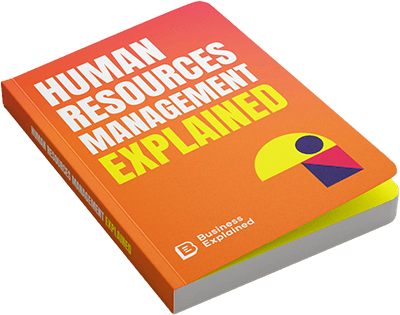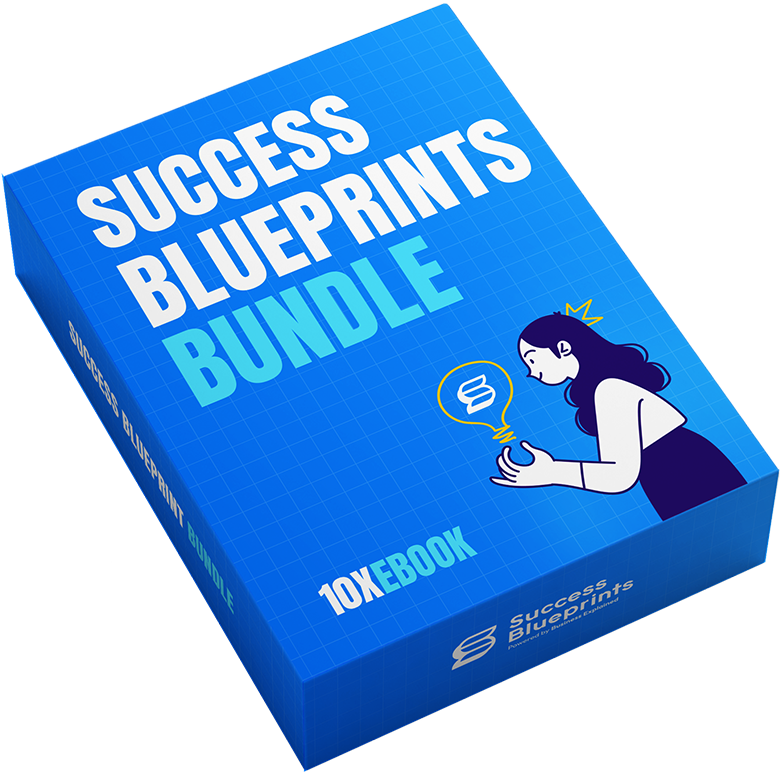Table of Contents
Recruitment strategies are evolving, and organizations often face a critical decision: should they focus on inbound recruitment, outbound recruitment, or a combination of both? To answer this question, let’s explore these approaches in-depth, comparing their features, benefits, challenges, and best use cases.
What Is Inbound Recruiting?
Inbound recruitment is a strategy focused on attracting talent by building a compelling employer brand and creating engaging content. This method combines elements of recruitment marketing and branding to encourage potential candidates to approach the company, rather than the company actively seeking them out.
Inbound recruitment aims to establish trust and interest among potential employees.
This approach emphasizes a candidate-centric model, aligning closely with modern marketing principles. The goal is to create a positive perception of the company through authentic storytelling, transparency, and value-driven messaging. Through targeted content and strategic visibility, inbound recruitment seeks to draw in both active job seekers and passive candidates who might not otherwise consider applying. It’s not just about filling open roles but about building lasting relationships with talent that align with the company’s mission and values.
Key Features of Inbound Recruiting: Attracting Top Talent
Inbound recruitment aims to draw candidates in by highlighting the distinctive attributes of your organization. It involves creating an employer brand that showcases your culture, mission, and values in a manner that connects with prospective employees.
Content marketing is essential, utilizing blogs, videos, and social media to connect with job seekers and communicate your company’s narrative. This method also highlights the importance of building relationships and fostering significant ties with both active and passive candidates.
A key aspect of inbound recruiting is fostering employee engagement early in the process, ensuring candidates feel valued and motivated as they transition into their new roles.
To guarantee visibility, job listings and career sites are enhanced for search engines, facilitating candidates in finding opportunities. At its essence, inbound recruitment focuses on providing a favourable and clear experience for candidates, ensuring a memorable impact.
Benefits of Inbound Recruiting: Why It’s a Long-Term Strategy
One of the main advantages of inbound recruitment is its ability to position your company as a desirable place to work, attracting candidates who naturally align with your values and culture. It’s a cost-effective strategy, relying on organic engagement rather than expensive outreach tools.
Insights from Forbes Inbound Marketing 2.0 further enhance this process by incorporating generative artificial intelligence, social media, and analytics tools to create a dynamic and efficient talent nurturing system.
Inbound hiring also builds a pipeline of potential candidates for future roles, ensuring that your hiring process remains consistent over time.
By integrating diversity recruitment strategies, businesses can further enhance the inclusivity of their hiring process, ensuring they attract candidates from varied backgrounds while aligning with broader organizational goals.
Common Challenges in Inbound Recruiting and How to Manage Them
While effective, inbound recruitment does come with its challenges. Building and maintaining an employer brand takes time and effort, which can make it less practical for companies with urgent hiring needs. This strategy tends to focus on active job seekers, which means you might miss out on passive talent who aren’t actively looking for opportunities.
The success of inbound recruitment depends heavily on the quality of your branding and content efforts, so outcomes can sometimes vary. Creating high-quality materials and optimizing your processes also requires significant upfront investment, which can be a hurdle for smaller teams or companies with limited resources.
Proven Strategies for Successful Inbound Recruiting
To make inbound recruitment successful, companies often focus on engagement and visibility. Social media platforms like LinkedIn and Instagram are essential for sharing updates, job opportunities, and employee stories that connect with candidates on a personal level.
Optimizing job postings and career pages through SEO ensures they rank well in search results, making your opportunities easier to find. Employer branding campaigns, including videos, testimonials, and blogs, highlight your workplace culture and values.
Providing a transparent and supportive candidate experience is crucial, as it builds trust and encourages candidates to stay engaged. Publishing industry insights and leadership opinions also helps position your company as an attractive employer.
For organizations seeking a deeper understanding of recruitment strategies, consulting Human Resources eBooks can provide actionable insights and innovative approaches to refine your hiring process.
Core Values of Inbound Recruiting: Principles That Drive Success
Inbound recruitment is built on three core principles: transparency, authenticity, and empathy. Transparency means being honest throughout the recruitment process and helping candidates set realistic expectations. Authenticity reflects the true character of your company, attracting individuals who genuinely connect with your mission and culture.
Empathy ensures you understand and address the needs of candidates, creating a positive and supportive experience from the start.
This strategy is closely aligned with the principles of inbound marketing, using content and digital tools to create a natural attraction to your company. Inbound hiring fills roles and positions your organization as a trusted and desirable place to work.
What Is Outbound Recruiting?
Outbound recruitment is a hiring strategy where recruiters actively search for and approach potential candidates, rather than waiting for them to apply. It’s a targeted approach that focuses on finding individuals with the right skills and experience for specific roles. This method is especially valuable for filling niche positions or reaching out to passive candidates who aren’t actively job hunting but might be interested in the right opportunity.
Outbound Recruiting Technology Can Improve Recruiting, according to Forbes. In the past, the main challenge of outbound recruiting was the significant investment of time and resources.
However, with modern software tools like Fetcher.ai, Gem, TopFunnel, and Hireflow.ai, the process has become much simpler. These tools help recruiters effectively identify and contact highly qualified candidates, including those who are currently satisfied with their positions, but may be open to exploring new opportunities.
In competitive industries or when specialized expertise is needed, outbound recruitment puts companies in control of the process. By reaching out directly, recruiters can establish personal connections and introduce candidates to opportunities they may not have considered.

Key Features That Define Outbound Recruiting: A Proactive Hiring Approach
Outbound recruitment is all about being proactive. Instead of waiting for candidates to come to you, recruiters take the initiative to seek out potential hires. This often involves using tools like LinkedIn, email, or even phone calls to connect with individuals who fit the role.
Platforms like GitHub and Stack Overflow are especially useful for identifying skilled professionals, particularly for technical positions. What makes this approach stand out is its ability to target passive candidates—those who aren’t actively job hunting but might be open to a compelling opportunity. A personal touch is crucial here, with customized messages designed to catch a candidate’s attention and show them why they’re the perfect fit.
Benefits of Outbound Recruiting: Why It’s a Winning Strategy
One of the biggest advantages of outbound recruitment is its speed. When a position needs to be filled quickly, this method allows recruiters to cut through the noise and focus directly on candidates who meet the job requirements. It also gives access to a broader talent pool, reaching passive candidates who wouldn’t normally respond to traditional job ads.
Because recruiters are connecting with pre-screened individuals, the quality of candidates tends to be higher, which can streamline the entire hiring process. This approach is particularly effective for roles that are hard to fill or when time is a critical factor.
Challenges of Outbound Recruiting and How to Tackle Them
While outbound recruitment can deliver great results, it’s not without its challenges. It requires time, effort, and resources to execute effectively. You need skilled recruiters who know how to identify the right candidates and engage them meaningfully. Passive candidates, while valuable, can be tough to convince—they may not be ready to switch jobs or might need more persuasion than active job seekers.
Reading resources like the Talent Management & Onboarding Explained eBook can help recruiters better understand how to seamlessly integrate new hires into the organization, ensuring long-term success.
Competition is high, especially for top-tier talent, so your outreach needs to stand out to make an impact.
Strategies for Outbound Recruiting: Proactively Engaging Top Talent
Making outbound recruitment successful requires a thoughtful approach. Some key strategies include:
- Using Professional Networks: platforms like LinkedIn are essential for finding and connecting with potential candidates.
- Crafting Personal Messages: tailored emails and messages that speak directly to a candidate’s experience and goals can make all the difference.
- Leveraging Specialized Tools: platforms like GitHub and Stack Overflow help pinpoint skilled professionals in technical fields.
- Networking in Person: attending industry events and conferences offers opportunities to meet talented individuals face-to-face.
- Expanding via Social Media: platforms like Twitter and Instagram can help recruiters reach a wider audience.
- Focusing on Passive Talent: reaching out to professionals who aren’t actively job hunting but might be open to a conversation about a new opportunity.
- Partnering with Agencies: recruitment agencies can provide access to pre-screened candidates and save time on sourcing.
Why Outbound Recruiting Works: The Key to Securing Top Talent Quickly and Effectively
Outbound recruitment is effective when speed and precision are essential. If you need to fill a specialized role or hire quickly, this approach allows recruiters to go straight to the best candidates, instead of waiting for them to apply.
Research shows that outbound recruitment often results in higher success rates—candidates who are actively sourced are more likely to be hired than those who come through traditional applications.
What sets outbound recruitment apart is the human connection it fosters. By reaching out directly, recruiters can build relationships and personalize the process. In competitive industries, where top talent is highly sought after, this proactive approach helps companies stay ahead and secure the best people for their teams.
Inbound vs. Outbound Recruiting: What’s the Difference?
When it comes to recruitment, understanding the difference between inbound and outbound strategies is key to choosing the right approach for your hiring needs. Both methods aim to find and hire the best candidates, but the way they go about it is very different, and each has its strengths depending on the situation.
Approach and Strategy
Inbound recruitment is about attracting candidates to your company. It focuses on building a strong employer brand, creating engaging content, and establishing an online presence that appeals to potential hires. This strategy aims to draw candidates in naturally, building awareness, sparking interest, and nurturing relationships over time. It’s a long-term approach that prioritizes trust and engagement.
Outbound recruitment, on the other hand, is much more direct. Instead of waiting for candidates to come to you, recruiters actively reach out to individuals they believe are the right fit for the job. Outbound recruitment works especially well for targeting passive candidates—those who aren’t actively searching but might be open to new opportunities.
Cost and Time Efficiency
Inbound recruitment can be a cost-effective solution in the long run, as it builds a steady pipeline of candidates through branding and marketing. However, it requires time to develop momentum, which means it’s not always the best choice if you need to fill roles quickly.
Outbound recruitment is faster and more efficient when speed is essential. This approach is ideal for urgent hiring needs, though it can be more resource-intensive. Specialized tools, outreach efforts, and recruiter expertise often come at a higher cost, but the results are quicker compared to inbound methods.
Candidate Quality
One of the main benefits of inbound recruitment is that it attracts candidates who are naturally aligned with your company’s culture and values. These candidates often make for better long-term hires, especially if cultural fit is a priority.
Outbound recruitment, on the other hand, is highly effective for sourcing specialized talent or filling leadership and technical roles. By targeting individuals with specific skills or expertise, outbound recruitment ensures that you’re reaching the right people for roles that require precision.
Finding the Perfect Fit for Inbound and Outbound Recruiting
Inbound recruitment is a great choice for roles with a broad candidate pool, such as entry-level or mid-level positions. It’s also ideal for companies focused on building a long-term pipeline of talent.
Outbound recruitment works best for roles that require specific skills or experience, such as managerial or niche technical positions. It’s also an excellent choice for companies facing tight deadlines or hiring in competitive markets where talent is in high demand.
Key Differences at a Glance:
- Focus: inbound recruitment emphasizes attracting candidates and building relationships, while outbound recruitment is about directly engaging with potential hires.
- Candidate Journey: inbound focuses on the early stages—awareness, interest, and engagement. Outbound moves straight to connecting with and securing the right talent.
- Engagement Style: inbound relies on employer branding and marketing, while outbound focuses on targeted, personalized outreach.
By understanding these differences, companies can determine which approach aligns best with their needs. Often, the most effective strategy combines the two: using inbound recruitment to build your talent pipeline and outbound recruitment to quickly secure top candidates for critical roles.
Factors to Consider When Choosing Between Inbound and Outbound Recruiting
Choosing between inbound and outbound recruitment comes down to understanding your company’s goals and the specific circumstances surrounding your hiring needs. Each method has its strengths, and the right choice depends on factors like timing, resources, and the type of candidates you want to attract.
If your company is focused on the long term and wants to build a steady pipeline of talent, inbound recruitment is likely the better option. This approach works well when there’s no immediate urgency to fill roles, allowing you to invest time in building a strong employer brand and creating meaningful connections with potential candidates. While it requires an upfront investment in marketing and branding, it can attract candidates who align deeply with your company’s culture and values.
If you’re in a phase of rapid growth or have urgent hiring needs, outbound recruitment might be the better fit. It’s particularly effective for targeting specific skill sets or filling roles quickly, especially in competitive or niche markets. This approach is more proactive and resource-intensive, often involving specialized tools and highly trained recruiters, but it gives you direct access to the talent you need.
The type of candidate you’re looking for also plays a big role in deciding between the two strategies. Inbound recruitment appeals to candidates who prioritize stability and are drawn to a company’s mission and culture. Outbound recruitment, however, is ideal for reaching professionals who might not be actively searching for a job but could be swayed by the right opportunity.
The best approach depends on your company’s priorities, the urgency of your hiring timeline, and the resources you can dedicate to recruitment. By carefully evaluating these factors, you can choose the strategy that aligns best with your hiring goals and ensures you attract the right talent.
When to Use Inbound Recruiting
The dynamic between recruiters and candidates has shifted significantly in recent years. Candidates have become more discerning, evaluating potential employers with the same level of scrutiny as employers assess applicants. In such a competitive hiring landscape, companies must adopt innovative strategies to differentiate themselves, and inbound recruiting provides an effective solution. Its primary goal is to enable organizations to highlight their unique strengths and attract top talent by creating a compelling employer brand.
Inbound Recruiting for Intermediate-Sized Enterprises (ETIs)
Intermediate-sized enterprises often find themselves in a unique position between startups and large corporations. While they benefit from the agility and flexibility of smaller businesses, they may lack the established brand recognition of larger organizations.
Inbound recruiting empowers ETIs to bridge this gap by showcasing their strengths, such as offering employees substantial responsibilities and opportunities for growth, all within a dynamic yet stable environment. This strategy helps ETIs position themselves as attractive employers capable of providing the best of both worlds.
Inbound Recruiting for Large Corporations
For large corporations, brand recognition is rarely a challenge. However, these organizations often fall short of delivering a seamless and engaging candidate experience. Issues such as outdated career sites, suboptimal user interfaces, and impersonal application processes can deter high-quality candidates and harm the company’s employer brand.
Inbound recruiting addresses these shortcomings by focusing on enhancing the candidate experience right from the first point of contact. By modernizing career portals, investing in user-friendly design, and offering valuable content that resonates with potential candidates, large corporations can reinforce their reputation as desirable employers.
Inbound recruiting allows these organizations to maintain their competitive edge by nurturing a positive relationship with candidates, ensuring they feel valued throughout the recruitment process.
Inbound Recruiting for Startups
For startups, inbound recruiting can be a game-changer. Operating in a highly competitive environment with limited resources, startups need to maximize the impact of their employer branding efforts. Inbound recruiting enables startups to emphasize their unique attributes, such as innovative work environments, opportunities to make a significant impact, and close-knit team cultures. By leveraging creative content and storytelling, startups can attract talent that aligns with their vision and values.
Why Inbound Recruiting Matters for All Organizations
Regardless of size or industry, the principles of inbound recruiting can benefit any organization. By focusing on authenticity, transparency, and a candidate-centric approach, inbound recruiting ensures that companies are not just attracting applicants but creating meaningful connections with potential employees. This strategy positions organizations to succeed in a candidate-driven market, where the ability to stand out and resonate with talent is critical to achieving recruitment goals.
When to Use Outbound Recruiting
Outbound recruitment is particularly effective in specific scenarios where targeted, proactive engagement is essential. Here are key situations where outbound recruiting is the optimal strategy:

Filling Niche Roles: Targeting Specialized and Unique Talent
For specialized, senior, or hard-to-fill positions, outbound recruitment shines. These roles often require specific expertise or experience that passive candidates may not actively seek out through traditional job postings. By directly reaching out to qualified individuals, recruiters can bypass the limitations of inbound channels and secure top talent.
Urgent Hiring Needs: Rapid Solutions for Time-Sensitive Recruitment
When there is an immediate need to fill critical positions, outbound recruitment offers a faster solution. This approach allows recruiters to actively search for and engage suitable candidates, reducing the time-to-hire significantly compared to waiting for applications to come through.
Engaging High-Potential Passive Candidates Effectively
Outbound recruitment is ideal for engaging passive candidates—those who are not actively job-hunting but may be open to new opportunities. By using tailored outreach methods, recruiters can attract high-quality candidates who might not otherwise respond to inbound efforts.
Expanding to New Markets: Unlocking Regional Talent Opportunities
For companies entering new regions or industries, outbound recruitment provides the ability to target local talent directly. This ensures access to professionals with the specific market knowledge and skills needed to support the expansion.
Can You Combine Inbound and Outbound Recruiting?
Absolutely! Combining inbound and outbound recruitment allows organizations to leverage the strengths of both approaches. Here’s how:
- Hybrid Strategy: use inbound methods to attract active candidates while employing outbound techniques for passive talent.
- Data Utilization: analyze inbound candidate data to refine outbound targeting.
- Employer Branding: strengthen your brand through inbound efforts to support outbound recruitment pitches.
Choosing between inbound and outbound recruitment depends on your organization’s goals, timelines, and resources. While inbound recruitment excels in building long-term relationships and enhancing employer branding, outbound recruitment is indispensable for filling urgent or niche roles. By understanding the nuances of both approaches, you can create a tailored strategy that meets your hiring needs effectively.


 Risk-free Purchase: Full refund within 14 days
Risk-free Purchase: Full refund within 14 days



